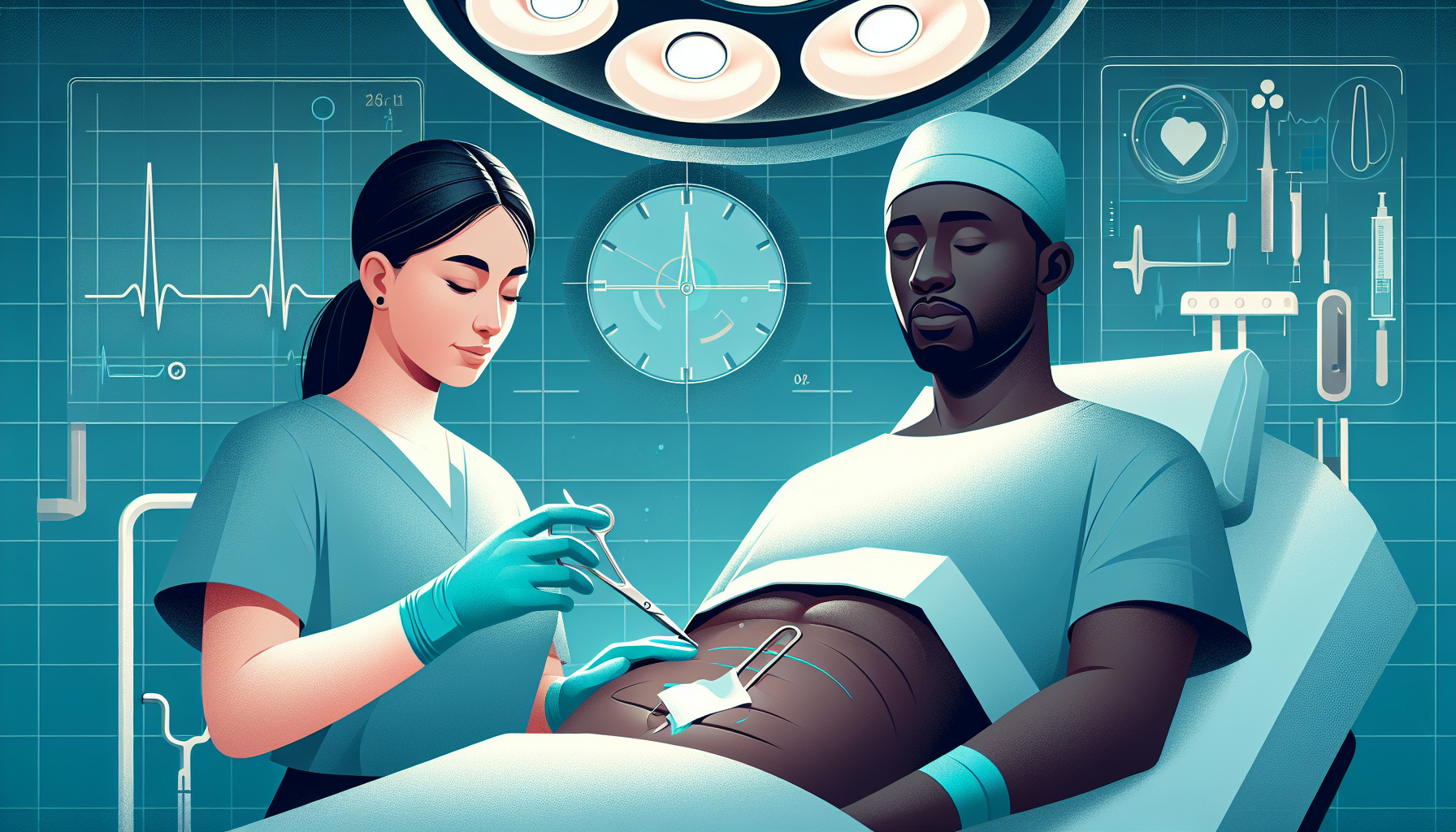Our Summary
This research paper looks into the use of robotic surgery for the treatment of a condition called left-sided colonic diverticulitis (LCD), a disease that affects the colon. Specifically, it compares the use of a robotic system called da Vinci Xi with traditional laparoscopic surgery. The study involved 22 patients who underwent laparoscopic surgery and 20 patients who had robotic surgery.
The results showed that both groups were similar in terms of patient’s demographics, clinical characteristics, operation time, and occurrence of complications after the surgery. However, they found that in the laparoscopic group, three patients had to be switched to open surgery, while none in the robotic group needed such switch. The switch to open surgery was associated with more complications after the surgery.
In conclusion, the study suggests that robotic surgery could be a good alternative for the treatment of LCD. It might even lower the risk of complications after the surgery by reducing the need to switch to open surgery.
FAQs
- What is the da Vinci Xi system and how is it used in colorectal surgery?
- How do the outcomes of robotic surgery with the da Vinci Xi system compare to laparoscopic surgery for the treatment of left-sided colonic diverticulitis?
- Can robotic surgery potentially lower the risk of operative morbidity in the treatment of left-sided colonic diverticulitis?
Doctor’s Tip
A helpful tip a doctor might tell a patient about diverticulitis surgery is to discuss with your surgeon the option of robotic surgery with the da Vinci Xi system. This approach may potentially lower the risk of operative morbidity by reducing the requirement of conversion to open surgery.
Suitable For
Patients with left-sided colonic diverticulitis who may be recommended for diverticulitis surgery include those with recurrent episodes of diverticulitis that do not respond to conservative treatment, those with complications such as abscess or fistula formation, those with severe symptoms such as persistent pain or bowel obstruction, and those with recurrent diverticular bleeding. Robotic surgery may be considered as an alternative to laparoscopic surgery for these patients, as it may potentially lower the risk of operative morbidity by reducing the requirement of conversion to open surgery.
Timeline
Before diverticulitis surgery:
- Patient may experience symptoms such as abdominal pain, bloating, constipation, diarrhea, and fever
- Diagnostic tests such as CT scans, colonoscopy, and blood tests are conducted to confirm the diagnosis
- Patient may be prescribed antibiotics to manage the infection and inflammation
- Patient may be advised to follow a liquid or low-fiber diet to rest the digestive system before surgery
- Patient may undergo preoperative counseling and consultation with the surgical team to discuss the procedure and potential risks
After diverticulitis surgery:
- Patient undergoes the surgery, which may be performed laparoscopically or robotically
- Patient is monitored in the recovery room before being transferred to a hospital room for postoperative care
- Patient is given pain medication, antibiotics, and fluids through IV to manage pain, prevent infection, and promote healing
- Patient is encouraged to walk and move around to prevent blood clots and aid in recovery
- Patient may be discharged from the hospital within a few days if there are no complications
- Patient follows up with the surgeon for postoperative care, which may include dietary restrictions, wound care, and monitoring for any complications
- Patient gradually resumes normal activities and may be advised to follow a high-fiber diet to prevent future episodes of diverticulitis
What to Ask Your Doctor
- What are the potential risks and benefits of robotic surgery for diverticulitis compared to laparoscopic surgery?
- How long is the recovery time expected to be after robotic surgery for diverticulitis?
- What is the success rate of robotic surgery for diverticulitis compared to other surgical options?
- Will I need a colostomy bag after robotic surgery for diverticulitis?
- What type of follow-up care will be needed after robotic surgery for diverticulitis?
- Are there any long-term effects or complications associated with robotic surgery for diverticulitis?
- How experienced is the surgical team in performing robotic surgery for diverticulitis?
- What is the expected outcome in terms of pain relief and quality of life after robotic surgery for diverticulitis?
- Are there any specific dietary or lifestyle changes I should make after robotic surgery for diverticulitis?
- Are there any alternative treatment options to consider before undergoing robotic surgery for diverticulitis?
Reference
Authors: Bilgin IA, Bas M, Benlice C, Esen E, Ozben V, Aytac E, Baca B, Hamzaoglu I, Karahasanoglu T. Journal: Int J Med Robot. 2020 Feb;16(1):e2068. doi: 10.1002/rcs.2068. Epub 2020 Jan 7. PMID: 31875352
